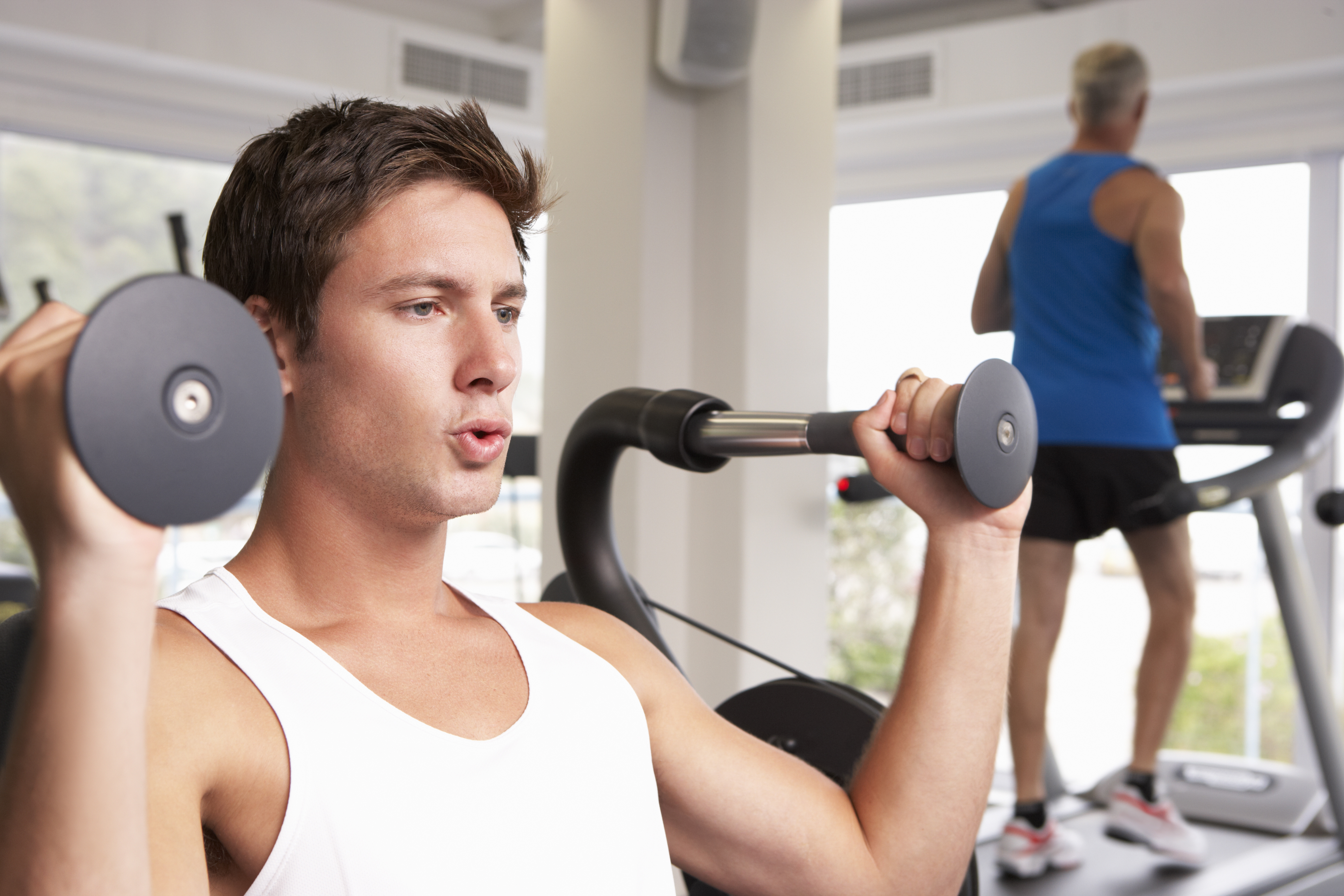Exercise prescription
Measure exercise capacity
A field walking test, such as the 6-minute walk test (6MWT) or incremental shuttle walk test (ISWT) could be used, with both applied in people with bronchiectasis and have demonstrated strong reliability in this population (Lee et al 2015), with an established minimal importance difference for pulmonary rehabilitation (Singh et al 2014, Lee et al 2014). Standard Guidelines for conducting these tests are outlined in the Technical Standards and are described in the Pulmonary Rehabilitation Toolkit.
Exercise prescription
Those experiencing dyspnoea on exertion (even mild dyspnoea) may benefit from a formal exercise or pulmonary rehabilitation program. There are currently no restrictions in disease severity, type of bronchiectasis or underlying cause and the degree of impairment in quality of life may range from mild to severe. Individuals with bronchiectasis are frequently included in existing pulmonary rehabilitation programs.
A formal exercise program generally includes aerobic and resistance training. Exercise training should include intensity, frequency, duration, type, mode and progression.
1.Aerobic training

Mode:
Walking (ground-based or treadmill), cycling, swimming or rowing are options.
For walking training, options for initial intensity which have been associated with benefits include:
80% of an average 6MWT speed or 75% of a peak speed of an ISWT
60% to 70% of maximal heart rate achieved on 6MWT
80% of peak heart rate achieved with incremental exercise test
Exercise is generally progressed based on the BORG Scale of achieving a score of 3-4.
An example for establishing this initial setting for the 6MWT is detailed below:
Exercise intensity for walking laps – based on 6MWT
Example: If the patient walked 420 m in six minutes:
One minute distance = 420 ÷ 6 = 70m.
30 minute distance = 70 x 30 = 2100m.
80% of 2100 = 1680m in 30 minutes.
If the distance of the walking track is known, the co-ordinator can translate this distance into a lap count. Patients may find it easier to count the number of laps they need to walk, rather than the number of metres.
As an example, if the walking track is 30 m then, over 30 minutes, the patient needs to walk 56 laps (1680 ÷ 30 = 56 laps). Alternatively, if a track of 50m in length was available, a total of 34 laps would be completed by the patient.
At the beginning of a program, patients (particularly those who have been sedentary) may not be able to walk continuously for 30 minutes. These patients should aim to start with 10-15 minutes of continuous walking, and build up to 30 minutes. From the above example, if a 15-minute exercise session is deemed necessary at the start of the program, then this patient would need to walk 840 m (i.e. 1680 m ÷ 2 = 840 m, which is 28 laps).
If a walking time of 10 or 20 minutes was required, the following adjustments would be made to the prescribed distance:
10 minute distance = 70 x 10 = 700m
80% of 700 – 560m in 10 minutes
20 minute distance = 70 x 20 = 1400m
80% of 1400m = 1120m in 20 minutes
Exercise intensity for walking on a treadmill – based on 6MWT
To calculate an appropriate intensity for walking on a treadmill:
Treadmill speed = 80% 6MWT average speed
6MWT average speed = (6MWT distance x 10) ÷ 1000 km / hr
Note: The treadmill speed may need to be set 0.5 – 1.0 kph slower than calculated due to the unfamiliar nature of treadmill walking compared to walking on a flat track. However, walking speed is usually never below 2kph when walking on a treadmill as speeds below this are difficult due to balance problems and do not represent efficient walking speeds.
Example: If the patient walked 420 m in the 6MWT, then:
420 x 10 ÷ 1000 = 4.2 km / hr.
80% of 4.2 km / hr = 3.4 km / hr.
Therefore, the initial treadmill speed would be set at 3.4 km / hr. The treadmill may start at approximately 3 km/hr to account for the patient being unfamiliar with treadmill walking.
Exercise intensity for cycling

Frequency:
A minimum of twice weekly aerobic exercise. This may be undertaken as part of a PR program (with the addition of at least one other session per week), or three times of week at home or within a community gym.
The ideal duration is a total of 20-30 mins of exercise, which may be achieved in stages for those who experienced significant exercise intolerance. Options for this include either continuous exercise (20 – 30 mins) or interval training (eg 10 mins, repeated 2-3 times), depending on the exercise capacity and symptoms of the individual.
2. Resistance / strength training

Mode:
Lower limb: Functional activities (Squats, stairs, step ups, sit to stand)
Equipment: leg press, quadriceps extension
Upper limb: hand-held weights (dumbbells), pull down, pectoral press
Exercises can be performed in sitting or standing.
Intensity:
Commence at 50 or 60% of 1 repetition maximum (RM).
Complete 1 set of 10 repetitions with correct technique.
Aim to increase the weight to 80% of individual patient’s 1RM, then progress to 3 sets of 10 repetitions.
Weight can then be progressed by 0.5kg.
Frequency:
Twice weekly is recommended. This may be undertaken as part of a PR program, or as part of a home or community program.
3. Mobility
To assist with respiratory function, it may be beneficial to prescribe mobilising exercises for the thoracic spine and rib cage.
Exercises could include:
Lying supine over a rolled towel (either vertical or horizontal to the spine, depending on the clinical signs and symptoms)
Pectoralis major stretches with arms either side of a doorway
Thoracic rotation – in standing, holding a walking stick with both hands, arms at 90deg to the floor
Side flexion – standing, arm reaching down leg
Lying in prone, propping on elbows

Mobilising exercises are generally performed as part of a warm up or cool down but may be practiced independent of a strength or endurance program if required.
As for aerobic and strength training a thorough assessment is required to ascertain the safety and suitability of the exercises.
Evidence
The short term effect of exercise training within pulmonary rehabilitation has led to improvement in the 6MWD from 25 to up to 53m and for the ISWD from 57m to 92m. Symptoms of dyspnoea and fatigue have reduced after rehabilitation and improvements in quality of life are evident (Lee et al 2017). The effects can last for as long as 3 months after program completion, but decline after 6 months (Lee et al 2014). Improvements in cough-related quality of life are dependent on the inclusion of an airway clearance routine within rehabilitation (Mandal et al 2012).
Key points
Patients already receiving resting and/or ambulatory oxygen therapy prior to commencement of exercise training should train using supplementary oxygen. For these patients, it is usually necessary to increase the flow rate by 1-2 L/min above the prescribed flow rate, when the patient is exercising.
For individuals who have not been previously prescribed oxygen therapy, supplemental oxygen may be required if oxygen saturations of 88% or less are evident during exercise testing or training. A formal assessment as part of a hospital-based program to determine the benefit of oxygen and the necessary flow rate is ideally completed prior to commencing a formal exercise program (pulmonary rehabilitation) or exercise training at home. If an individual shows improved oxygen saturation and improved exercise tolerance when oxygen is prescribed, supplemental oxygen therapy should be provided during exercise training sessions, titrated to maintain oxygen saturations greater than 88% (refer to www.pulmonaryrehab.com.au)
If exercise therapy is prescribed as part of an airway clearance program, it is important to include the forced expiratory technique either during and/or at the end of the session to maximise on the expiratory flow created with exercise.








